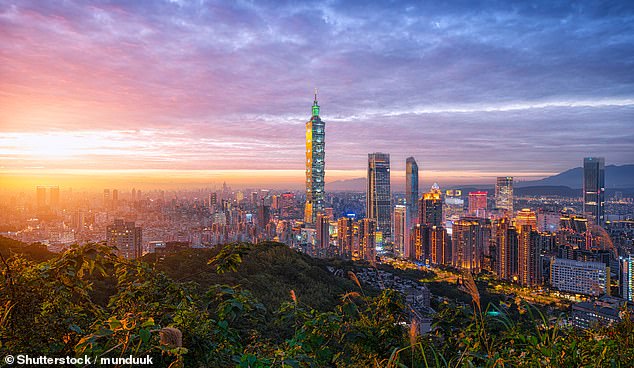“We all get a little nervous when April and August come around.”
I wasn’t entirely clear on what Brian Hioe, a journalist and activist, was referring to, so between mouthfuls of beef broth and meatballs, I asked him to explain.
The sea in the strait between China and Taiwan is calmer during these months, he tells me, making an invasion more likely.
One of the many attractions of the remarkable island of Taiwan is the resilience of its people.
They manage to be serious and fun, relaxed and alert. Plus, they are incredibly welcoming to foreign tourists.
The power of the towers: John Kampfner kicks off a tour of Taiwan in Taipei, the bustling capital (pictured)
Brian is interested in talking not only about the threat coming from “over there” – China – but also in introducing me to Wang’s Broth.
This restaurant, in the heart of the Huaxi Road night market, may look more like a canteen, but this institution attracts celebrities (even the newly elected president felt the need to visit during the recent campaign) and is featured in the Michelin Guide.
Shortly before my visit, Chinese planes had been threatening Taiwanese airspace. Yet locals remain calm (or, rather, agitated) and carry on, figuring that since an invasion hasn’t happened in decades, why should it happen now?
Now that dictators are clamping down elsewhere, they see a market opportunity. They believe Taiwan is replacing Hong Kong as the region’s cultural and tourism hub. And they are right. Hong Kong, once a bold beacon of free speech, now feels anxious. As in big cities on the mainland, you fear someone is watching you, making sure you don’t step out of line.
Taiwan couldn’t be more different. With its wide, noisy streets, the capital Taipei is not classically beautiful. However, there is no shortage of places to visit and it is easy to get around.
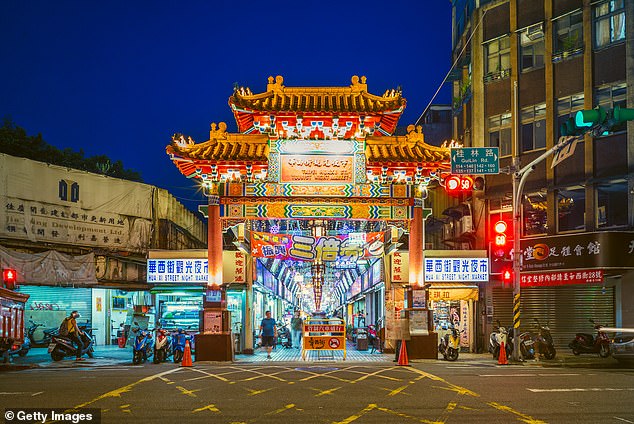
John dines at Wang’s Broth in Taipei’s Huaxi Street Night Market (see above). The restaurant is featured in the Michelin Guide, he reveals.
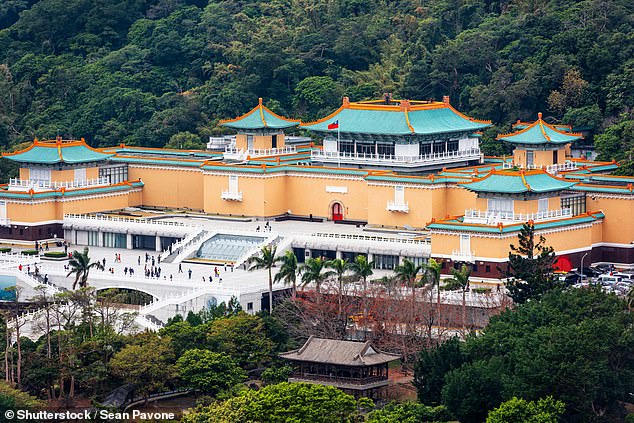
Above, the National Palace Museum in Taipei, which houses the world’s largest collection of 5,000 years of Chinese art and artifacts.
My first destination is the Maokong Cable Car, which takes you from the Taipei Zoo, over the oolong tea plantations, to any of the many tea houses at the top. If you’re not afraid of heights, choose one of the glass-bottomed cable cars.
The most famous landmark in Wanhua, Taipei’s oldest district, is the Longshan or Dragon Mountain Temple. Watch as worshippers toss two wooden blocks called jiaobei blocks to the ground and wait for the divine response. Depending on how they land, they receive a “yes,” “no,” or “maybe” answer to their prayer.
The National Palace Museum contains the largest collection of 5,000 years of Chinese art and artifacts in the world. In 1949, when the Communists took control of the mainland, the Nationalist leader, Chiang Kai-shek, fled and established an alternative Republic of China on the island.
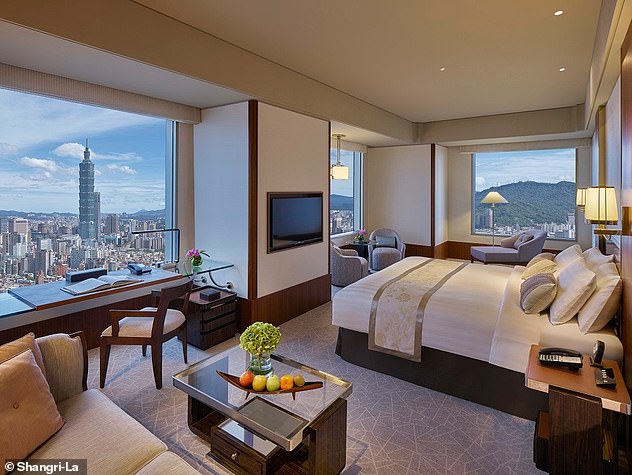
During his stay in Taipei, John stays at the Shangri-La, which features “sumptuous rooms offering panoramic views of the city and the surrounding mountains.”
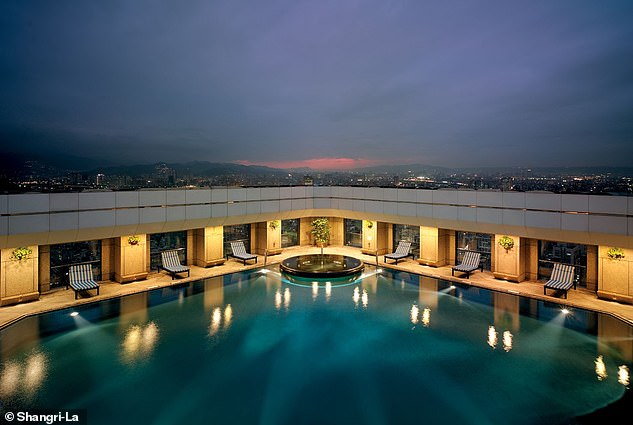
Above, the Shangri-La’s rooftop pool and jacuzzi.
They brought the objects with them and here they remained, much to the anger of Beijing. The museum is said to house 700,000 pieces and it would take days to do it justice. It is best to focus on one or two rooms, looking at the scrolls, vases or ornate ceramic figurines from the 7th century.
One building dominates the city. Taipei 101 was the tallest skyscraper in the world when it opened in 2004. In 2010, it was surpassed by Dubai’s Burj Khalifa. I take the express elevator to lunch at one of the restaurants on the 85th floor.
So much for size. Taipei’s real charm lies in its small streets. My favourite area is Da’an, south of the centre, where the main university is located. I stay here at the Shangri-La, whose sumptuous rooms offer panoramic views of the city and surrounding mountains from floor to ceiling. The best view of all is from the rooftop pool and jacuzzi.
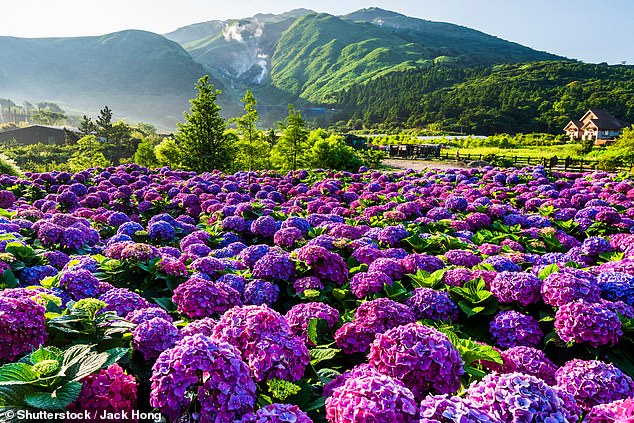
John visits Yangmingshan, a national park with “well-marked hiking trails”
In Taiwan, it is not possible to get lost, or rather, it is possible, but within seconds someone will offer to help. If they don’t know English, speak into a translation app on your phone and they will redirect you with a smile.
Strolling around is part of the fun. Otherwise, one night I wouldn’t have found a speakeasy near my hotel where two super cool Japanese bartenders make you a cocktail.
But it’s just as easy to get away from it all. An hour from Taipei by bus, rental car or taxi is Yangmingshan, a national park with well-marked hiking trails.
I stay one night on the edge of the park in a spa hotel where you can spend hours in the various hot or cold pools surrounded by bamboo and birdsong.
I take the high-speed train to Tainan, the old capital, but prefer the more modern city of Kaohsiung. Here they have managed to build the largest single-space theatre in the world. Coincidentally, I am here on the eve of the spectacular dragon boat festival.
But Taiwanese don’t have to rely on national holidays to go out and have fun. They live day by day. Their enthusiasm, their defiance, is contagious.


